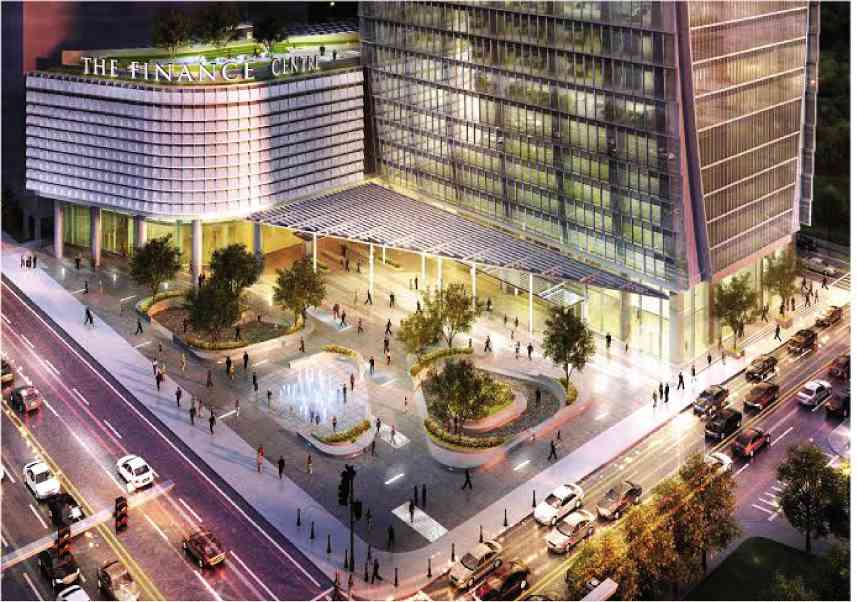6 traits that will ‘revolutionize’ global office buildings
The Philippine property industry is now seen as ready to face a “revolutionized” workplace designed for multinational companies and global brands.
Experts predict that worldwide, millennials “Gen-Y-ers” (those born in the ’90s onward) are approaching the numbers that will make them the world’s largest workforce, triggering a drastic change in the workplace, transforming the traditional office blueprint into green, tech-friendly and collaborative workspaces.
Daiichi Properties, a commercial property developer in Manila, has recently partnered with Gensler, the global authority in commercial design and architectural firm behind the world-class offices of iconic brands such as Facebook, Airbnb, Uniqlo and Incheon International Airport. Eric Manuel, Daiichi Properties vice president for business development, Gensler architect Sasha Zeljic, and architect Reynaldo Ramon C. Fuentez Jr., Daiichi’s Project Management Group VP, share six traits of today’s global office building that would fit the workspace ideals of MNCs and young professionals.
1) Buildings reflect global images of world’s financial centers. Manuel said that these buildings should reflect the images of multinationals, Fortune 500 and leading local companies.
“When these tenants look at the buildings in the Philippines, they are looking for a building that reflects their image in New York, London, Hong Kong, Shanghai and Paris,” Manuelsaid.
He added that the business district for Daiichi Properties’ five projects will be Bonifacio Global City (BGC). Gensler is bringing its global best design practices to the Philippines to please Daiichi Properties’ clients, which include MNCs from Fortune 500 companies and local companies.
2) How the building performs, not how it looks. “It’s not really about how the building looks, but how it performs,” Zeljic said. When Filipinos look at buildings in the market, rarely do they look at how it performs. Mostly, it’s about the cost of the rent, the utilities available, its proximity to leisure, landmarks and other establishments. Building performance is a holistic look as to how these cogs allow an investor to achieve business growth.
3) Open spaces to inspire creativity and collaboration. Gensler’s design forecast for 2015 cited that “when the work is collaborative, the teams need workspaces that’s atypical of the sector generally, but maps well to the desire of younger employees for settings that inspire creativity.” Gensler named The Finance Center, a Daiichi property, as an example.
Also cited was Daiichi’s One World Place in BGC that stands as a Grade A premier corporate center that’s certified by the Philippine Economic Zone Authority (Peza) and precertified LEED Gold.
“In the knowledge economy where we are today, collaboration is of utmost importance,” Manuel said.
Zeljic added that in advanced economies, office floor plates have become a bit larger. “We see that the cores on the building are being pushed to one side and you allow for larger floor plans in order to put more people and have them in circular ground,” Sasha added.
Zeljic also cited the need for a third-place environment, e.g. café, healthy snack bar and gym (treadmill area). “How users evolve, we must also evolve. Real estate is a place where you work, live and entertain yourself,” he added.
4) Evolving beyond the cubicle farm. As office floor plates have become larger, there’s also a trend on decreasing density of space per person.
Zeljic said: “We also see a decrease in density of how much square meters you need per person in a typical floor plate. That’s the kind of trend that is associated with the generation that is coming into workforce because these days we have phones, laptops, all the gadgets. What we are trying to do is to look at where the people will be located in the building, if they will need different kinds of spaces, and how these spaces will be positioned.”
5) Green, tech-friendly. One World Place is recognized for being the first in Southeast Asia to feature “monsoon windows,” an innovative concept of natural ventilation. Asia Pacific Property Awards also named it Best Office Development in the Philippines for two consecutive years since 2013. Together with the World Plaza, these three commercial office towers make up the Peza-certified and precertified LEED (Leadership in Energy and Environment Design) Gold projects Daiichi and Gensler have collaborated on.
According to Fuentez, the monsoon windows have been widely used in a tropical country like Singapore. He said: “There is a certain air that goes inside a building at a certain time. If you need fresh air at a certain point, you can just switch on that opening and fresh air comes in.”
Zeljic added that the monsoon window is just one of the features to help improve the workplace that is relevant for this particular climate.
Manuel said the buildings have an HVAC (heating, ventilating and air-conditioning) system that is “unique, with its three-stage filtration system.”
“Our building is connected to the Daikin headquarters in Japan,” Manuel disclosed, assuring of nonstop operations and maintenance processes.
6) Prestige and relevance over time. Another trend that is seen in the Philippines as in other global cities is the design of the buildings becoming more forward. Signages of some of the biggest companies are visible in buildings mainly for tenant attraction and tenant retention.
Manuel said the standards of today will change and evolve. “What we need to do as developers is to aim ahead. Aim forward,” he added.
“We are partnering with a firm that studies global trends in office design with the idea of creating a building that meets or exceeds international standards and is relevant 30 years from now,” Manuel said.
It has taken 23 years for Daiichi Properties to assemble its world-class portfolio. Being pioneer in the development of the Ortigas CBD, Daiichi’s first two buildings—Taipan Place and Orient Square—are still known as premium buildings even as the community has evolved.

